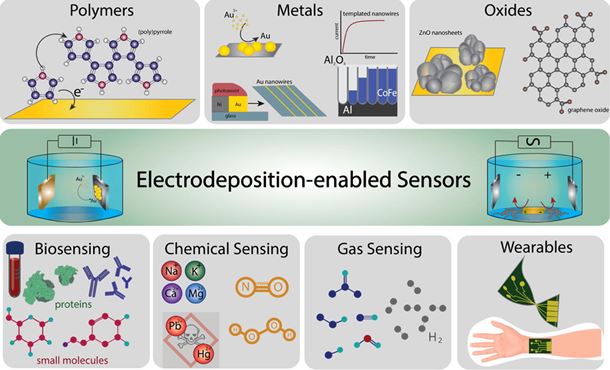Electrodeposition-enabled, electrically-transduced sensors and biosensors
Volume 62, Issue , Page 129–150
| Nicholas P. Drago, Nicholas J. Humphrey, Justin Van Houten, Jaewan Ahn, Jiyoung Lee, Il-Doo Kim, Alana F. Ogata, Reginald M. Penner
Abstract
Electrodeposition and electropolymerization have emerged as versatile tools for the fabrication of chemical and biosensors. The literature in this area, published since 2017, is the main focus of this review. Electropolymerization has played a particularly prominent role in sensor development since its discovery in 1980 by Diaz at IBM. The ability to entrain receptors such as antibodies, engineered virus particles, and metal chelating agents into a conductive polymer sensing element during electropolymerization has proven to be a powerful means of preparing chemiresistors for a variety of analyses. Electrodeposition has also been used to prepare nanostructured metal indicator microelectrodes, enabling of a new modality for transducing biosensors. Electrodeposited metal nanowires have formed the basis for rapid and sensitive sensors for hydrogen gas. Electrodeposition has also been exploited as a powerful means for amplifying weak biosensor signals, extending their dynamic range. Opportunities for the application of electrodeposition and electropolymerization for chemical and biological sensor fabrication and function are discussed.

See full text for more information.
Read full text on ScienceDirect
DOI: 10.1016/j.mattod.2022.11.021
Share this journal article